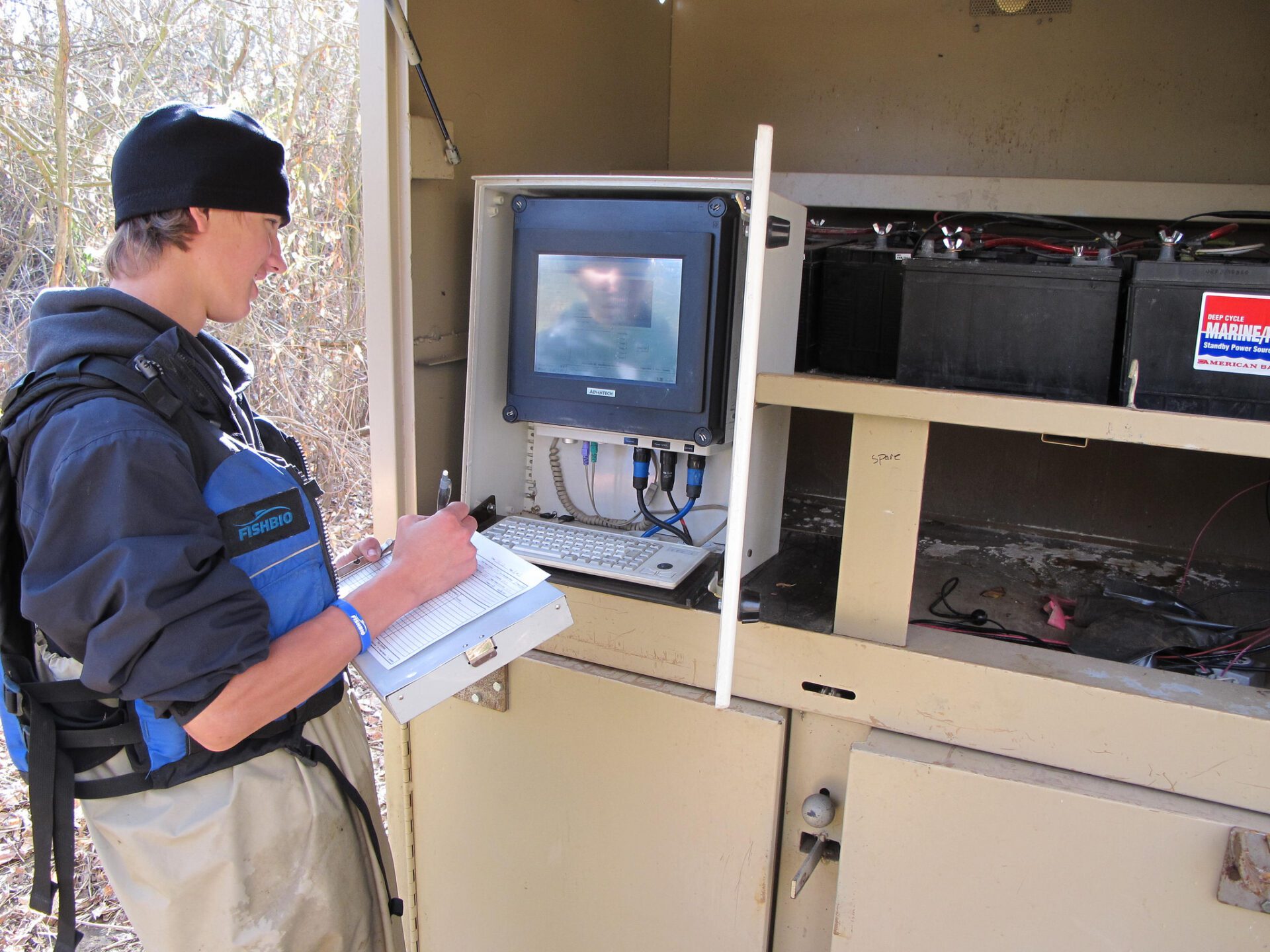Monday January 9, 2017
The Vaki Riverwatcher (www.riverwatcher.is) is used to monitor fish movements in more than 300 rivers in countries all over the world, including Canada, China, the Czech Republic, Germany, Iceland, Ireland, Poland, Portugal, Scandinavia, South Korea, Spain, Switzerland, the United Kingdom and the United States. This robust distribution leads to many users with questions about the device. As the North American distributor for Vaki, FISHBIO often receives questions from current and prospective Riverwatcher users, which inspired us to produce some videos to help answer the most frequently asked questions. The 10 most frequently asked questions and their answers are provided in the video series “FAQs – The Vaki Riverwatcher.”
The Riverwatcher is an infrared fish counter that utilizes an underwater camera and lights to provide a robust record of fish passages, and records information in a database that is organized for efficient and accurate data summary and reporting. As many fish biologists know, scanning endless hours of video surveillance from video monitoring studies or scouring a particular spot in the river for hours in all weather conditions is not only a daunting task, it is also very labor intensive, which increases project costs. Installing an automated fish counter like the Riverwatcher can significantly reduce the time and effort needed monitor fish passage events.
One of the most frequently asked questions we receive is, “Does the Riverwatcher automatically identify species?” Although the Riverwatcher does not automatically identify species, biologists find that one of the advantages of using the Riverwatcher is that it takes considerably less time to manually identify species when utilizing the intuitive Winari database software. Riverwatcher users around the world have reported the ability to process 24 hours of data (or about 500 passages) in 15 minutes, which results in budget savings that can be used for other studies to answer questions that are generated after analyzing multiple years of Riverwatcher monitoring data collection.
Another frequently asked questions is, “How does the Riverwatcher detect fish?” The Riverwatcher uses infrared light to detect fish. In order to accomplish this, fish are directed between two scanner plates that consist of one infrared light transmitting plate and one infrared light receiving plate. As the fish passes between the scanner plates, the transmittance of infrared light between the two plates is interrupted, thereby triggering the Riverwatcher system to record the event as a passage. Subsequently, the system records more detailed information from the passage event.
Many people also ask, “Does the Riverwatcher work in turbid water?” Yes, this is one of the biggest advantages of the Riverwatcher: you can still detect and identify fish passages during high turbidity events. The scanner plates transmit light to detect fish passages, so as long as the light can be transmitted through the turbid water from one scanner plate to the other, you can efficiently count fish.
Check out the video series to learn the answers to more frequently asked questions. We hope that you find these videos helpful – and if you still have unanswered questions, or want more information relevant to your specific monitoring challenges, don’t hesitate to contact us. We always enjoy answering people’s questions because we usually learn from the discussion too!
This post featured in our weekly e-newsletter, the Fish Report. You can subscribe to the Fish Report here.

